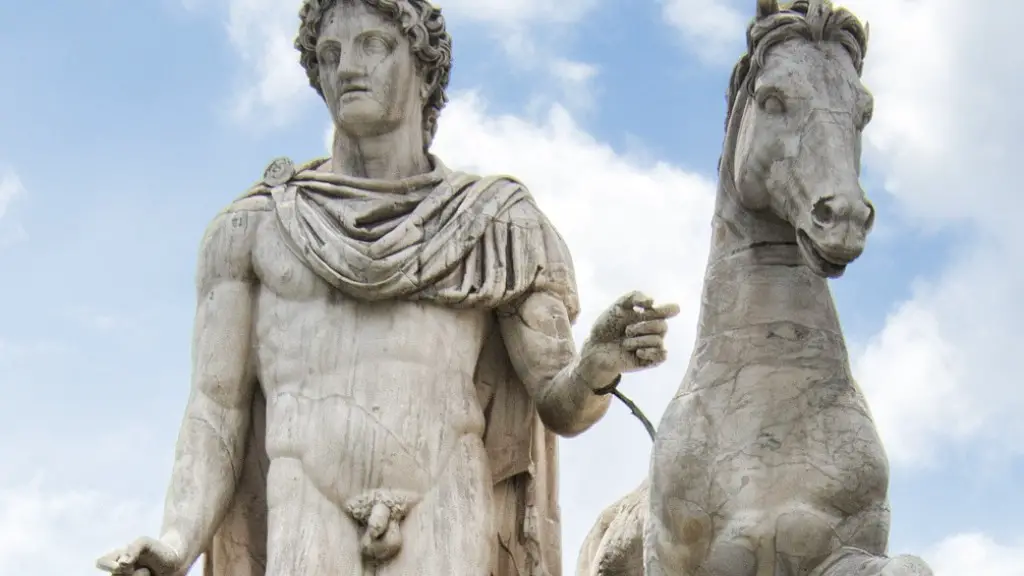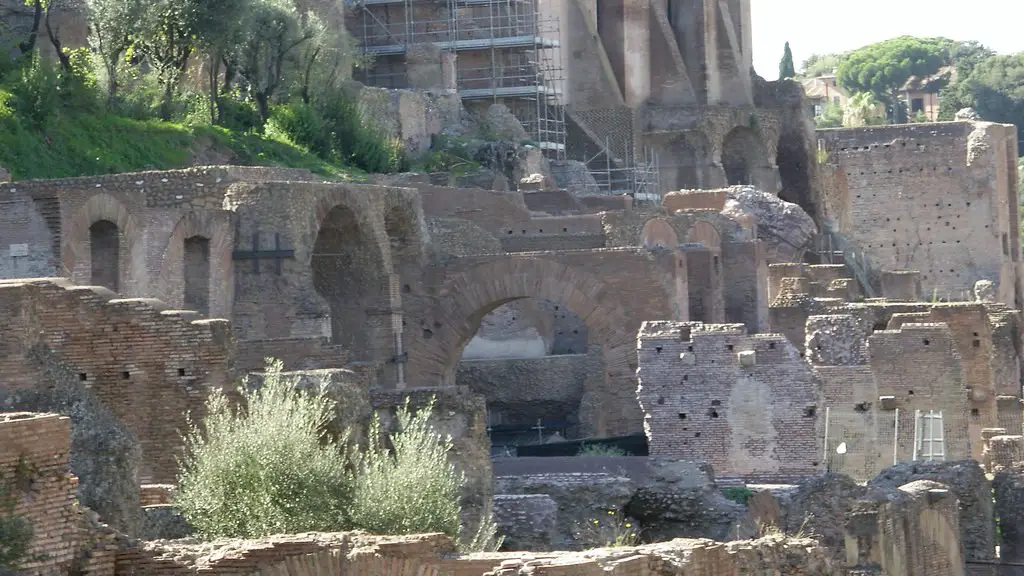Life
The culture of ancient Rome was deeply influenced by the Greeks and Etruscans, and was renowned for its advanced systems of law and government, its strong and resilient army, its advanced roads and aqueducts and for its distinctive architecture. Ancient Roman culture was largely based on family and extended kinship, with loyalty to the father as the supreme authority of the home. Roman religion was also highly developed, with a pantheon of gods and goddesses being venerated, along with an extensive system of rituals and ceremonies. Ancient Roman literature was highly regarded in its own time, with Virgil and Lucretius being two of the most significant authors of the period.
At the heart of the Roman cultural life was the cult of the emperor, which was deeply entwined with the official religion. Every emperor was believed to possess divine authority and, by publishing laws and decrees, he acted as the virtual creator of Roman culture. He had the power to appoint his successors and was also responsible for certain aspects of public life, such as the distribution of bread and wine to the people.
Ancient Rome featured many forms of entertainment. Gladiatorial games, chariot racing, theatre, comedy and poetry all played a role in the Roman culture. Gladiatorial contests, where combat was pitted against animals or criminals, were especially popular. Chariot racing was a favourite pastime of the Roman upper classes. Theatre featured Roman dramas, comedies and tragedies. Roman poetry encompassed mythological, religious and moral themes and it reached its height during the era of Roman rule.
While entertainment was a beloved part of Roman culture, the major emphasis of Roman life was on work, education and civic duty. The Romans placed great emphasis on education, which was sometimes compulsory for children of wealthy families. Families were also expected to maintain a strict moral code. Wealth and power, along with adherence to religious and civil rights, were important to the Roman people.
Writing & Language
The Latin language served as the lingua franca of Ancient Rome, imbuing its culture with a common language for expression. Roman writing paralleled its art in its precision, simplicity and elegance. Cicero, Catullus and Virgil were three of the most famous authors of Latin literature. Other authors, such as Horace, Livy and Lucan, are still read and studied today. Latin literature was one of the most important elements of ancient Roman culture, as it provided a way for the Roman people to articulate their beliefs, values and identity.
Latin came close to becoming the language of government and religion in the Roman Empire as Latin words began to appear in legal and religious texts. As the Roman Empire grew, so did its use of Latin, and in the fourth century CE, Latin had become the official language of the Roman Empire. Latin also flourished due to the Roman Republic’s focus on education and literacy. Education was considered one of the most important aspects of Roman life, and the language was an integral part of this educational system.
Despite its prominent use, other languages were still spoken in the Roman Empire. Some of these languages included Greek, Gothic, Aramaic and Punic. Latin had become a part of the very fabric of Roman culture, and its pervasive presence had a lasting impact on the culture and language of Europe. Its legacy is seen in many of the modern languages that are descended from it, such as French, Spanish and Portuguese.
Religion
In Ancient Rome, the practice of religion was closely entwined with the state and its official cults. Romans worshipped gods such as Jupiter, Juno and Neptune, believed in omens and fortune telling, and also held a deep respect for the dead, holding annual festivals of the dead and even making sacrifices to the gods on their behalf. These beliefs made up a large part of daily life in Ancient Rome, and were especially prevalent among the upper classes.
One of the core beliefs of Roman religion was the importance of the gods in protecting the state. In exchange for devotion, the gods in turn promised to protect the state and its citizens. This protection was a primary motivation for the observance of religious festivals and rituals.
Religion also played an important role in defining Roman morality. Roman ethical values emphasised obedience to authority, respect for the gods, as well as courage and honour. To a large extent, these values were derived from Roman mythology, which was focused on the stories of the gods and their origins.
Art & Architecture
Ancient Roman art featured a wide variety of forms, ranging from sculptures, paintings and mosaics to architecture. Unlike the art of the Greeks, which emphasized naturalism, Roman artists focused on depicting grandiose scenes of the gods, heroic figures and scenes of everyday life.
The Romans also constructed grand civic buildings, such as aqueducts, theatres, temples and baths. The Pantheon, the Colosseum, the Roman Forum and Trajan’s Column are among the most famous examples of Roman architecture. These buildings featured grandiose columns, domes and arches, combining architectural styles from the Greeks and Etruscans with unique Roman innovations.
The architecture of Ancient Rome had a lasting impact on modern European cityscapes. In addition to providing a model for building civic buildings, the Roman style of architecture has been used for a variety of private and public buildings throughout the centuries.
Economy
The economy of Ancient Rome was mainly based on agriculture. The Romans developed an efficient system of distribution for its crops, which were mainly wheat and olives. Much of the agriculture was carried out by small subsistence farmers, who grew crops on land leased from large landowners.
Trade also played an important role in the Roman economy. The Romans traded with many parts of the Mediterranean region and further afield. Their trading activities included slaves and metals, which they sold to other places in exchange for goods such as spices, cloth and fine pottery.
In addition to agriculture and trade, the Romans were skilled craftspeople. Roman pottery, bronze work and lamps were highly sought after and traded far and wide for their quality. There were a number of large manufacturing firms which churned out mass produced goods such as arms, armour, weapons and coins.
Politics & Government
The political system of Ancient Rome was founded on the principle of the rule of law, with strict constraints on the power of the individual. The Roman Senate played a major role in lawmaking, and its decisions had the force of law. When the Senate did not meet, lawmaking powers were vested in the Roman People, who could also elect representatives to the Senate.
The Senate was also responsible for the selection of officials and the formation of alliances with foreign powers. Rome established a system of provincial government, with colonies being founded all over the Mediterranean. The Romans also fostered diplomatic relations with some foreign powers, such as Egypt and Persia.
Ancient Rome was a highly structured society, with laws covering almost every aspect of life. Slavery was a major part of the Roman economy, though not all slaves were treated inhumanely. The law of property was very strict, and civil rights for Roman citizens were also relatively high.
Education & Science
Education was highly valued in Ancient Rome and the Romans put a great emphasis on learning. Children of wealthy families were usually sent to school, and those who could afford it could attend university. Roman universities specialised in law, medicine and rhetoric.
The Romans are also famous for their achievements in science and technology. Claudius Ptolemy wrote several works on astronomy and geography, while Archimedes studied mathematics, physics, engineering and astronomy. The Romans also invented many of the engineering processes and materials that are still used today, such as concrete and aqueducts.
Medicine was also an important branch of learning in Ancient Rome. Galen, who wrote several influential works on medicine and anatomy, was one of the most renowned doctors of the period. Roman doctors were known for their skill in diagnosing and treating various ailments.
Clothing & Fashion
Ancient Roman fashion was distinct and very influential, drawing on both classical Greek and Hellenistic styles. Roman men would often wear a toga, a wool garment draped over the shoulder and across the body. Women would wear a chiton, a flowing robe woven from linen. Outfits were often decorated with jewellery, such as earrings and necklaces. Shoes consisted of sandals or boots, depending on the occasion.
Clothing in Ancient Rome was not just about fashion, however. It was a symbol of social status and power and was used to differentiate people. The elaborate outfits of the wealthy classes were meant to show off their wealth and influence, while the plain clothing of the lower classes were intended to display their lack of resources.
Fashion in Ancient Rome also acted as a form of expression, with people often wearing symbols of their beliefs and ideas on their clothing. This could be something as simple as a decorative pin, or the use of colours to indicate social class. In this way, fashion was an essential part of Roman culture and society.

